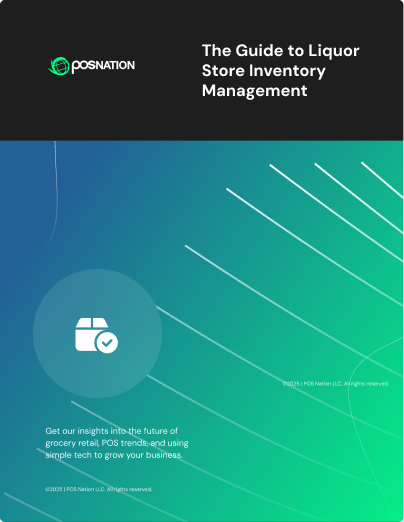Everyone loves a good clearance section, but when unsellable goods take up space in your warehouse, they become a problem.
That problem? Dead stock.
Without proper inventory management tools and processes, you’ll wrestle with common issues like stockouts, but you may also face the less famous problem of dead stock. If you have shelves full of unwanted inventory gathering dust and taking up valuable real estate in your store, this is the post for you.
In this blog, we’ll define dead stock and its impact and discuss how to manage it. We’ll also give you some tips and tricks to help minimize the impact of dead stock on your bottom line and your inventory.
What Is Dead Stock and How To Manage It
Dead stock is items that won’t sell now or in the future because they are expired, obsolete, out of season, or low quality. Instead of making you money, keeping too much dead stock in your warehouse will only hurt your bottom line because you cannot recoup the costs of unsold goods.
Note: There are two definitions of dead stock. The second definition is limited-time items that will not be sold again, such as designer shoes or limited-quantity products. In this blog, we’ll discuss the first definition mentioned above.
Dead stock occurs when items are over-ordered, backordered, defective, or inaccurately forecasted. We’ll get into more of this below.
The biggest downside of dead stock is that it does not turn a profit, and your business incurs the carrying costs.
Related Read: How To Increase Inventory Turnover: 6 Ways To Optimize Your Inventory
Dead Stock vs. Slow-Moving Stock
Slow-moving stock has minimal demand but still sells. Dead stock is obsolete, expired, defective, or out-of-season items and cannot be sold. Slow-moving stock still stays in your inventory for an extended period of time and will likely result in being labeled as dead stock in the future.
For example, say you sell laptops. When Generation B comes out, Generation A will become slow-moving, but people will still buy it because they want to save money or it’s familiar to them. However, when Generation C is released, Generation A will become obsolete because it’s out of date and no longer supported.
Related Read: What Is Smart Inventory in Retail? 4 Reasons Your Store Needs This Capability
Types of Dead Stock
There are a few different types of dead stock. These will vary depending on your industry.
- Unsold seasonal items: These are products that were popular during a specific season but failed to sell before the season ended. Depending on trends, they may sell next season. Examples include winter coats, hats, and scarves.
- Discontinued items: These products are no longer in demand due to changes in market trends, technological advancements, or product obsolescence. The laptop scenario above is a good example.
- Expired items: Products that cannot be sold because their expiration date has passed. Examples include grocery and general store staples like food, supplements, medication, and cosmetics.
- Damaged, low-quality, or expired goods: These inventory items have become unsellable due to damage, expiration, deterioration, or low quality.
Keeping these types of dead stock in mind while ordering inventory and conducting regular counts will help you keep tabs on your potential for losses in this area of your business.
Causes of Dead Stock
So, how does dead stock occur? Here are a few reasons.
- Inaccurate forecasting: If you’re still manually calculating inventory, it’s easy for a mistake like this to happen. Erroneous historical data may lead you to inaccurately forecast demand and how quickly the item will sell.
- Over-ordering: Similar to inaccurate forecasting, over-ordering happens when you don’t understand how much you’ll sell in a given time period. Without an inventory control system, you’ll order too much and incur carrying costs.
- Marketing flops: If you have a high-demand product but low sales, your sales and marketing efforts aren’t working. That item will be stuck in your warehouse until these teams can work together to boost sales.
- Defective items: Items returned with a defect cannot be resold, which means they’ll sit in your inventory as dead stock until you get rid of them.
- Backorders: If you run out of a product before orders have been filled, this leads to backordering. If you order too many products in a panic, you may not sell them all once they are back in stock. Customers who placed orders for that item might also get fed up with the long wait and cancel the order.
- Canceled orders: As the name implies, these are items that were on order but the transaction was canceled by the customer. If the order contains a perishable or seasonal product, it may not sell.
- Long lead times: If you order something consumers want now, but the time it takes to get from the supplier to you is too long, consumer demands may shift and you won’t be able to sell all of it once the product arrives.
Keeping tabs on these causes can help you keep your dead stock risk to a minimum and increase profits in your store.
Impact of Dead Stock
What happens when you have too much dead stock? The effects can be devastating for your business, and they can be felt from top to bottom.
- Financial implications: In addition to revenue loss, your business may experience decreased profitability and tied-up capital due to inventory carrying costs and lack of growth.
- Increased employee costs: If your staff is constantly moving excess stock to make room for high-demand products, you have to foot the cost of labor to manage, move, and organize dead stock items.
- Operational challenges: That stock has to be stored somewhere. Your business may experience increased storage space requirements, inventory management complexities, and potential obsolescence risks.
- Reputational risks: Word of mouth is the strongest form of marketing. Too much dead stock, due to constant clearance sales, returns, or liquidations, may negatively impact brand image and customer trust.
Like the name suggests, dead stock can be a killer for your business!
How To Calculate Dead Stock
To calculate dead stock, use the following equation:
Dead stock value = total units in stock x unit price
If you’d rather not worry about doing the math, proper point of sale (POS) software will help you keep track of your inventory and make better business decisions.
Related Read: Essential Inventory Metrics Every Liquor Store Should Track
Dead Stock Management and Prevention
If you’re already dealing with dead stock, there are a few ways to manage it that can help minimize risk and profit loss. Start with implementing a robust demand forecasting process, which will minimize over-ordering and accurately predict customer demand.
Other ways to manage dead stock:
- Inventory optimization, which uses inventory management software and tools to monitor inventory levels, identify slow-moving items, and optimize stock levels.
- Promotions and discounts allow you to target specific items, offer discounts, and tailor marketing campaigns to stimulate demand for dead stock items and reduce inventory holding costs.
- Liquidation channels offer alternative sales avenues such as online marketplaces, liquidation auctions, or wholesale buyers to sell dead stock inventory at discounted prices.
- Partnering with charitable organizations will allow you to donate or recycle unsold inventory responsibly.
- POS software will help with item and SKU lookup, inventory counts, label and barcode printing, and demand forecasting.
To avoid dead stock, conduct periodic inventory audits to identify slow-moving items and take proactive measures to prevent dead stock accumulation. Work with your suppliers to maintain open communication and adjust order quantities based on demand forecasts and market trends.
Adopting agile inventory management practices such as just-in-time inventory replenishment minimizes excess inventory and reduces the risk of dead stock.
How POS Nation Can Help
We understand that not all businesses are created equal, which is why we tailor every POS software solution to perfectly suit your needs and goals. You can expect:
- All the features you need right out of the box, no expensive add-ons
- 24/7 ongoing support as you onboard and train
- A partner dedicated to your business success
- Software that provides you with reports and data you can actually use
Related Read: 4 Must-Have Features of a Hardware Store POS System
How To Get Rid of Dead Stock
A few additional ideas for getting rid of the dead stock you’re currently carrying include:
- Put items on sale or run a liquidation sale.
- Bundle items as a freebie in shipping packages.
- Donate products to local charities.
- Recycle items at a nearby facility.
- Suggest product bundles with dead stock items at purchase.
- Try returning items to the supplier.
- Sell on a different channel. For example, if you’re primarily brick-and-mortar, try selling online. If you’re already online, try additional channels such as Etsy, Amazon, or Poshmark.
- Create ads for social media channels where your audience hangs out.
Inventory Management Software Eliminates Dead Stock
Dead stock will affect your bottom line in more ways than one: from employees constantly moving it around the warehouse to not turning a profit, dead stock puts your business at risk. Not having a way to accurately track what you already have in stock leads to over-ordering, backordering, canceled orders, and more. And all those flubs result in dead stock.
An all-in-one point of sale and inventory management software solution like POS Nation will stop dead stock in its tracks.
With reports that help you see exactly what’s in your inventory, what’s popular now, and what may be popular later, you’ll always have exactly what your customers want when they want it.
Want to start taking control of your dead stock and inventory management processes? Schedule a demo of our solution today.







 by Gina Obert
by Gina Obert

 by Brian Sullivan
by Brian Sullivan


 by Graham Hoffman
by Graham Hoffman